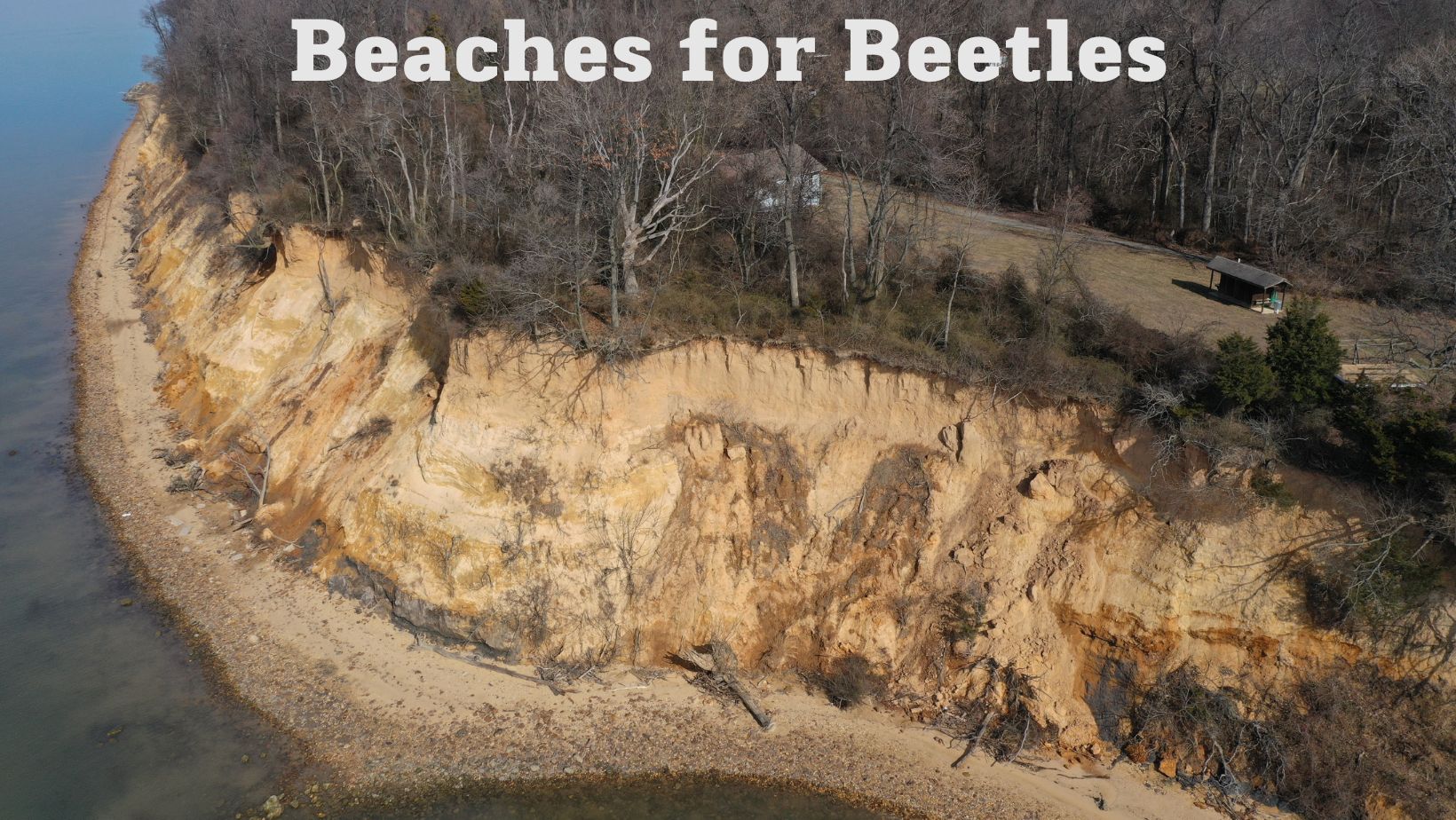Beaches for Beetles

The common view of the Eastern Shore is a landscape of small towns, flat farmland, dense woodlands and wetlands; a landscape threatened by land subsistence and increased flooding. What is often lost in that perspective is the dramatic variation in topography and associated land use across the landscape that is key to the Shore’s identity.
This is no more dramatic than the cliffs that border many of the properties of Kent and Cecil County. For some, the view of the cliffs provides a visual feast that adds to the beauty of the landscape. But for many others, the erosion that is associated with these cliffs is more dramatic than the views, with many landowners seeking ways to protect their farms.
But the slow erosion of the land is a process that has been occurring for millennia. The sand that comes from the Bay’s cliffs often builds up naturally along the shore, forming beaches like those at Terrapin Park and Sandy Point. Other than recreational places for humans to swim and fish, these beaches are key habitat for wildlife. For example, shorebirds (plovers, sandpipers, killdeer, etc.) often use beaches for nesting. These beaches also attract invertebrates and shellfish that provide food for many predators. Therefore, the process of erosion, while inconvenient, also serves an important purpose for conservation and public access.
In the Chesapeake Bay watershed, this process is no more important than for one threatened species. Eagle-eyed boaters may notice portions of the cliffs that are pockmarked with small holes. These holes are home to the Puritan Tiger Beetle (Ellipsoptera puritana), a species that has been federally listed as endangered since the mid-1990’s. This species is threatened by loss of their habitat, the small beaches and cliffs of the Chesapeake Bay. Stabilization and development of shorelines and cliffs harden their habitat, limiting the ability for the beetles to burrow to lay eggs and raise larva. The small burrows in the cliffsides are essential, as they provide relatively protected habitat for the larva, giving them time to develop in safety.
Wildlife habitat is one of the key considerations for ESLC’s Land Conservation program. One of the last remaining populations of Puritan Tiger Beetles was the focus of a 2014 conservation easement ESLC completed in partnership with the Maryland Department of Natural Resources and the U.S. Fish and Wildlife Services. It is thanks to this easement that the cliffs of the property can continue their natural erosion process and secure protection of the beetle population in perpetuity.
So, the next time you see one of these cliffs or are enjoying a cold drink on a sandbar or beach on the Chesapeake Bay, we hope that you will consider the benefits these cliffs provide to all those who call the Bay home.






